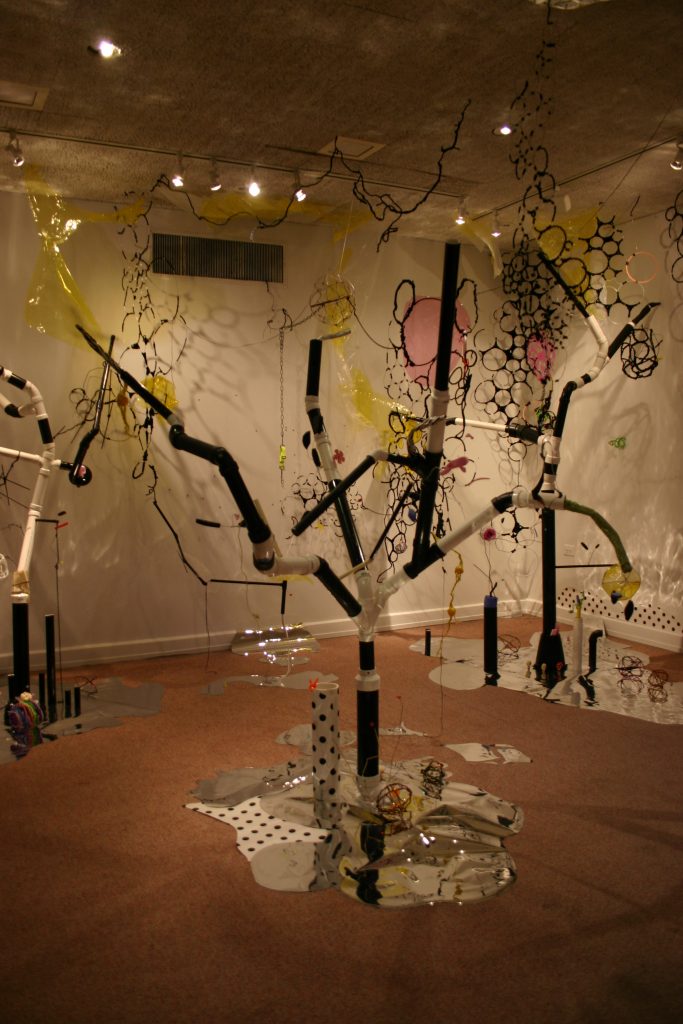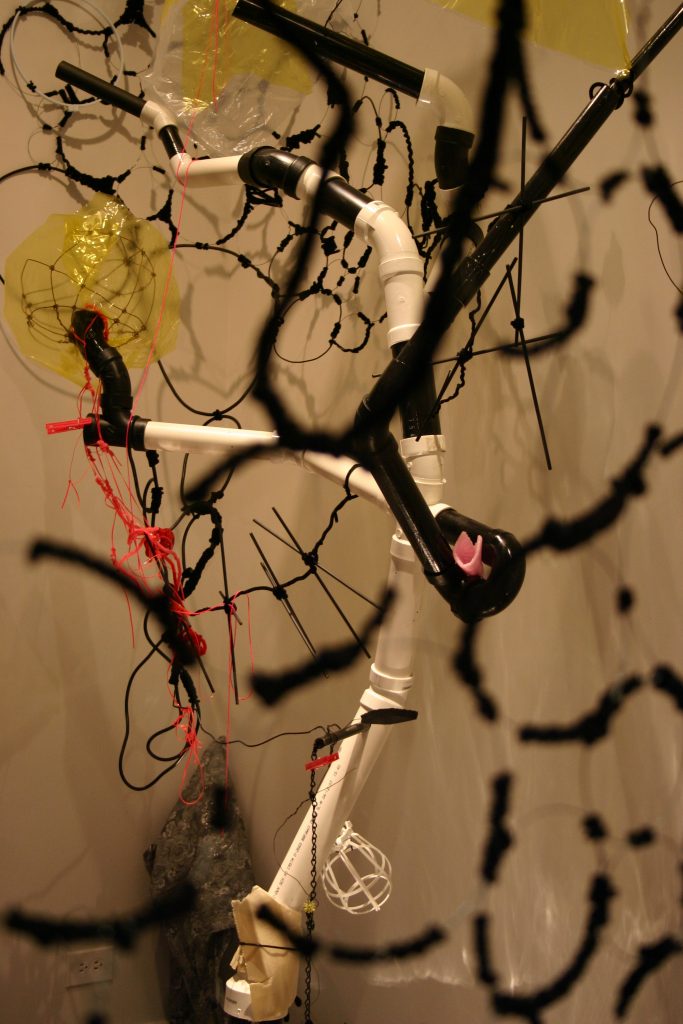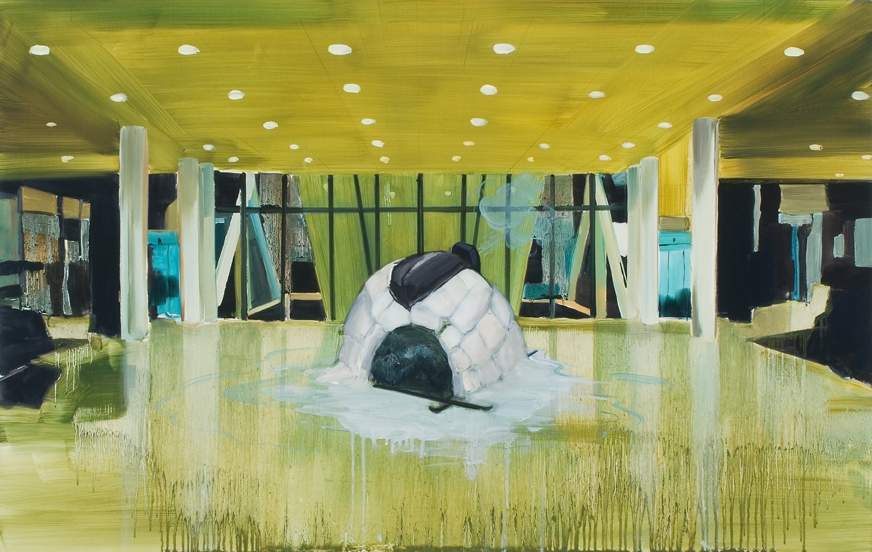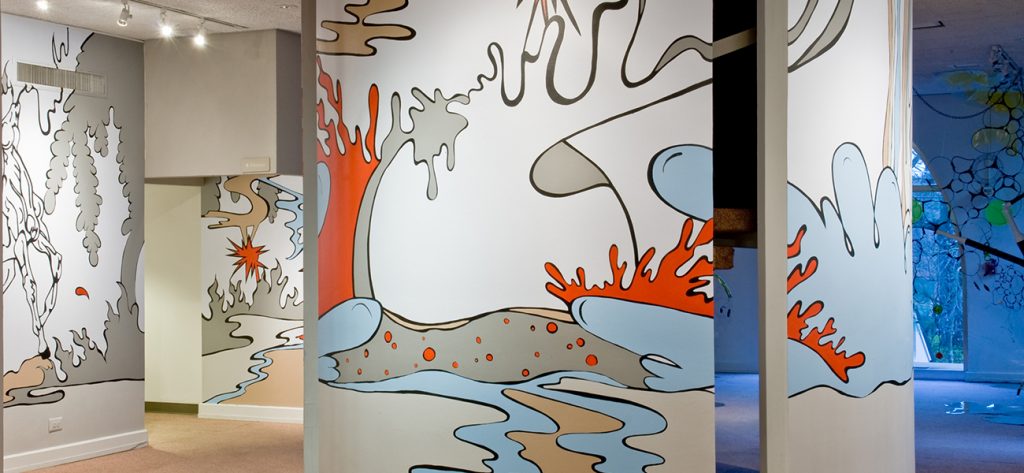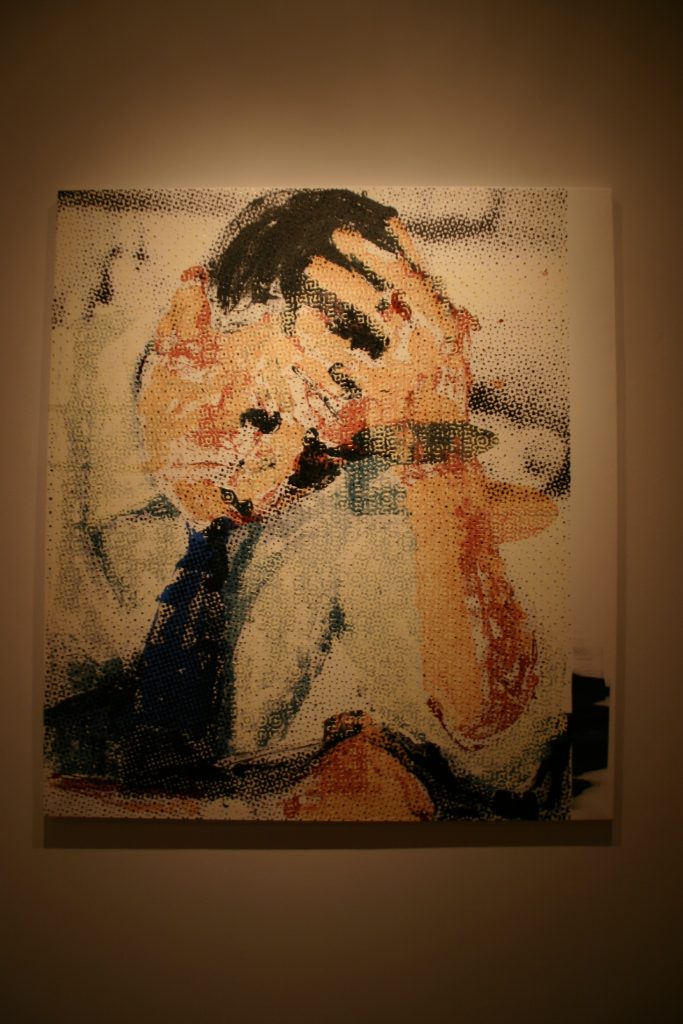The Possibility of Framing Infinity on view spring 2008 curated by Lisa Alembik.
“Painting as a noun takes on limitless form and attitude. It can arouse visual pleasure, support a manifesto, tell a story and speak of ideas. It is carved out of history. As a verb, painting is a suggestive practice that unfolds and is often self-reflexive. It is about color and shape and the senses extraordinaire. A rich process of exploration can take place through the goop of the medium, the blending of pigments and energetic eye movement. In action, the painter’s scope of vision will enclose the picture plane like a web—or like the hot pinball machine of life. This process has the power to capture a point of view, cracking open space to produce new galaxies, often delving into the personal and unknown. Articulated and raw, restrained or whatever, painting at its best is a commitment that constantly poses questions.
The processes employed when painting can play a significant role in the development of any artistic work, infiltrating composition and method. This exhibit was inspired by this belief, that a painting sensibility, the dug-in knowledge developed through an intentional, prolonged experience of painting, can be expressed through a variety of forms and media. It is a way of thinking, of looking at the world that rests in composition. This idea allows for the making and exploration of culture with a focus on fluid form, light and material.
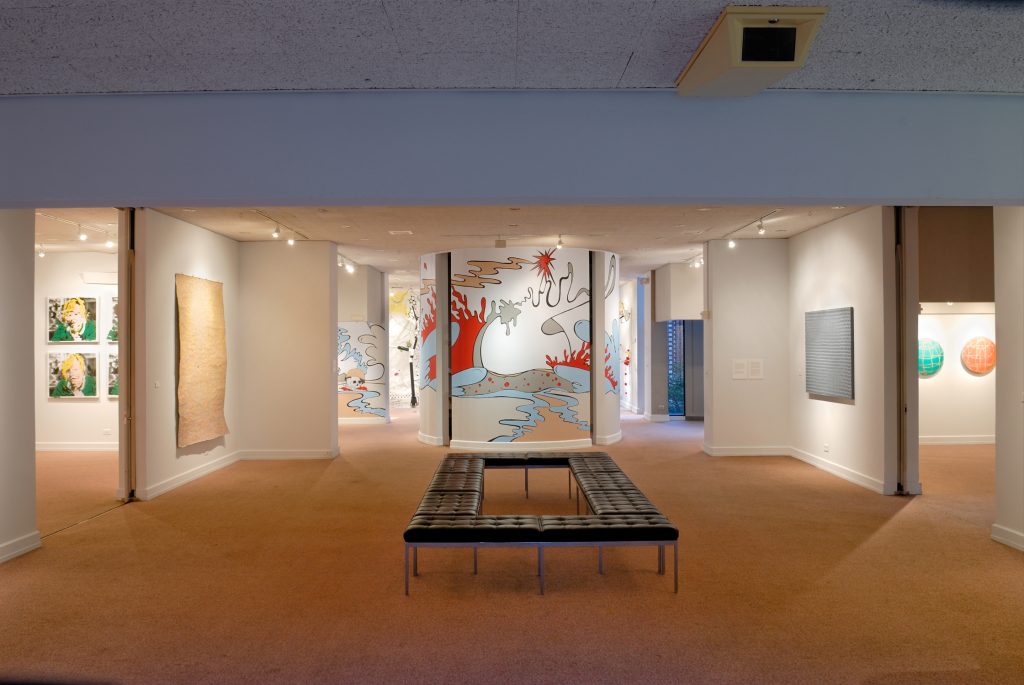
As this exhibition evolved, a certain sensation emerged from within the early gathering of artists, nothing out of the ordinary or uncommon, but a very strong binding sensibility. The exhibit’s founding premise, of bringing together artists working in a variety of media through a painter’s lens (or brush), became less of a priority than fostering this sensation, identified as the artists’ consideration of a limitless, never-ending continuum of space that changes with perspective, over time. The title, The Possibility of Framing Infinity, is meant to be open-ended as not to describe the artwork but the act of making.
For centuries artists have been working to express space and time—whether for a specific narrative or as a means to an end. Grounding this within the history of art, three artists or works of art are brought to mind. Consider the painting Mona Lisa (1503-1506) by Leonardo da Vinci (1452-1519). The sitter, with her enigmatic smile, is front and center, with rolling, misty hills disappearing into a diffuse background of atmospheric perspective. It has a sense of continuum, of forever, not only in the landscape but also within her visage. In the painting by J. W. M. Turner (1775-1851), The Burning of the Houses of Lords and Commons, October 16, 1834 (1835), which is exemplary of his work, the scene breaks into an intuitive deconstruction of the moment, with color and light telling the tale rather than an exact rendering of a historical incident. To Barnett Newman (1905-1970) whose paintings with “zips,” as he called them, begun in the 1940s, embedded the sublime into vibrating planes of color where the splits simultaneously break and hold his work into dense motion.
This framing of a place or body, whether it is a literal figurative point of view or a formless and intangible space can be experienced throughout this exhibit. In Colleen Lynch’s, Marcia Cohen’s and Caomin Xie’s paintings, a world is abstracted to come together into a meditative or ocular whole. A happening is described and re-scripted as it repeats through history—as the flood of Katrina is riffed and swelling in the sensory installation by John Otte. Jeremy Chance strives to disassociate himself from the potentially personal, emotional process of painting by honing in on headshots of actors portraying various expressions connected with depression, utilizing the distancing processes of printmaking to further himself from emotional stimulus. The picture plane, broken into a wake of formlessness, is reinvented and pulled together by the artist. Sally Heller creates environments of overgrown fuzzy and plastics stuffs that explode in space, with trees of PVC pipe, grass and mosses of pipe cleaners and Mylar pools of water. By framing these moments, space is re-shaped and transformed. For Sarah Emerson, the threshold of mortality is highlighted next to the unending unraveling coil of infinity in her existential explorations. Kristine Moran’s overflowing, unfolding worlds are empty of living human presence, where remnants of abandoned warehouses are overgrown with unbridled nature—flooded, iced over—still lit by the artificial glow of florescent lights.
Framing usually showcases something in its best light, possibly at its most effective essence. To frame infinity, to square off the limitless and timeless, is a bold endeavor.”
-Lisa Alembik, Dalton Gallery Curator 2002-2013

